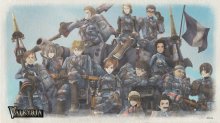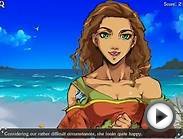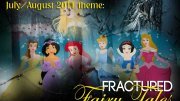 The ever-present mechanic I’ve noticed in many Japanese games is Visual Novel dialogue and storytelling. It’s used in games such as Valkyria Chronicles, Disgaea, Advance Wars, Metal Gear Solid, Ar Tonelico… The list just goes on and on. I’m so used to visual novels that I’ve almost taken it for granted in Japanese games, but since it’s so prevalent, it should be observed for its form and purpose even more. This raises some interesting questions: What is the history behind it, why is it used, and how can we possibly benefit from its use? Well, let’s take a look.
The ever-present mechanic I’ve noticed in many Japanese games is Visual Novel dialogue and storytelling. It’s used in games such as Valkyria Chronicles, Disgaea, Advance Wars, Metal Gear Solid, Ar Tonelico… The list just goes on and on. I’m so used to visual novels that I’ve almost taken it for granted in Japanese games, but since it’s so prevalent, it should be observed for its form and purpose even more. This raises some interesting questions: What is the history behind it, why is it used, and how can we possibly benefit from its use? Well, let’s take a look.
 If we want to understand why visual novels are so prevalent now, we’ll first need to look back all the way to the beginnings of the Japanese games industry. Back, when dinosaurs still roamed the earth, and video games still came on floppies, we find our scene. In the darkness of his room, a lonely Japanese man sits by himself, inserting one of many floppy discs into an antiquated fossil of a computer. That game was the precursor to the Japanese gaming industry, and the mother of the visual novel. That game was an eroge. Or, put in more blunt terms, it was a porn game.
If we want to understand why visual novels are so prevalent now, we’ll first need to look back all the way to the beginnings of the Japanese games industry. Back, when dinosaurs still roamed the earth, and video games still came on floppies, we find our scene. In the darkness of his room, a lonely Japanese man sits by himself, inserting one of many floppy discs into an antiquated fossil of a computer. That game was the precursor to the Japanese gaming industry, and the mother of the visual novel. That game was an eroge. Or, put in more blunt terms, it was a porn game.
No, don’t alt-tab yet, I promise this is a Safe For Work article! While it may seem confusing and odd that the visual novel dates back to eroge, just follow me here for a bit. The eroge eventually evolved into the dating sim, which would eventually evolve into the visual novel. While a Japanese mystery game for the NES actually laid the ground-work for the visual novel format we know today, it was the eroge industry who took that template and ran with it. The visual novel format allowed eroge and normal VN makers to be able to add never before reached levels of story and immersion, by adding literature and writing into the core of a game.
While a Japanese mystery game for the NES actually laid the ground-work for the visual novel format we know today, it was the eroge industry who took that template and ran with it. The visual novel format allowed eroge and normal VN makers to be able to add never before reached levels of story and immersion, by adding literature and writing into the core of a game.
From here, many eroge makers started to add more “gameplay” like elements into their visual novels, and thus from the visual novel sprung the JRPG. Companies like Falcom, who practically invented the JRPG, actually got their first start in the eroge business. By using the strong storytelling capabilities of the visual novel format, game studios were able to create games with unprecedented depth, such as Final Fantasy IV and Tactics Ogre. These new JRPGs, and even SRPGs, utilized the visual novel format to handle diologue between characters and describe details, while still allowing interactivity and strategy by using tile and menu based combat. While Final Fantasy IV has aged quite badly (in my opinion), Tactics Ogre’s story still stands out as a shining example of writing and narrative in video games. Tactics Ogre’s graphics and mechanics may have aged, but it’s story has not, thanks to the power of writing that the visual novel style of story-telling added to it.
Source: blackshellmedia.com

|
Sage Fusion 2 (RPG VN) Mobile Application (Kidalang Pte. Ltd.)
|
You might also like:



Related posts:























